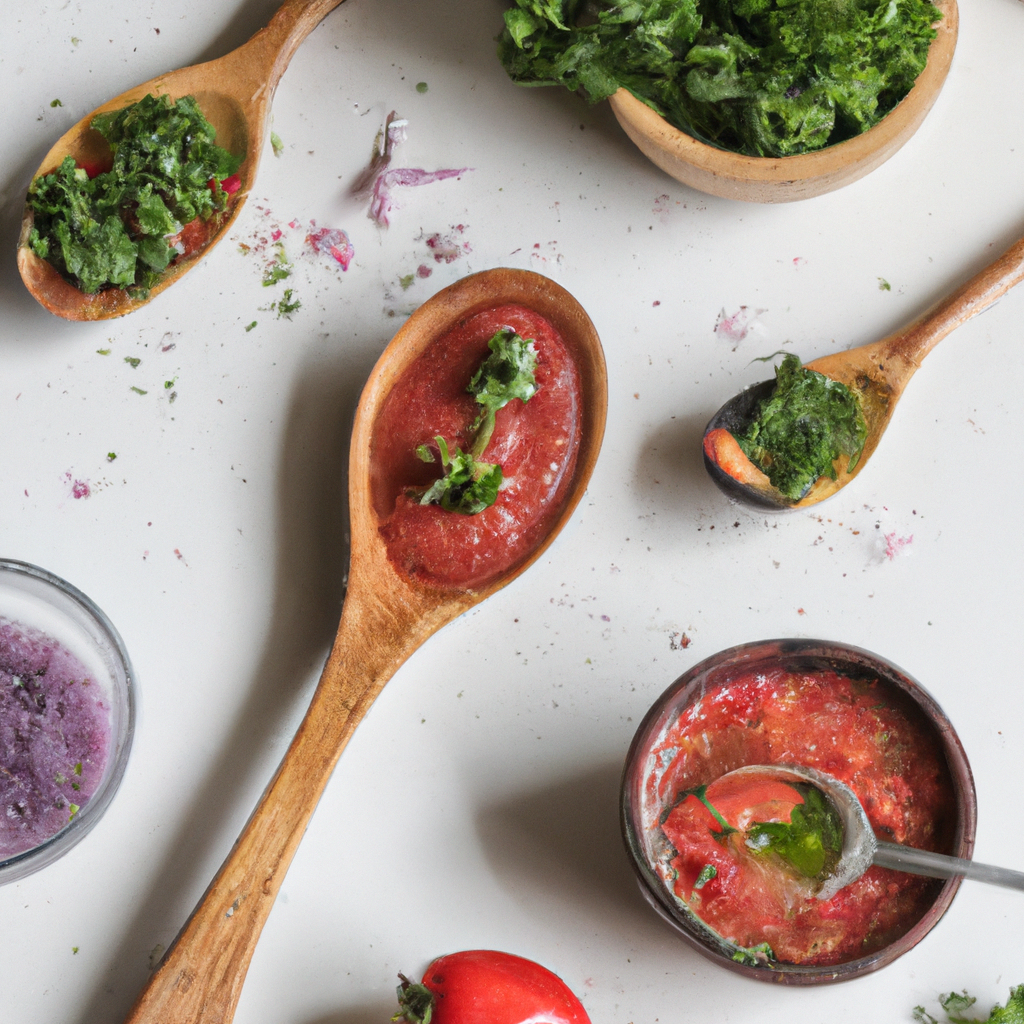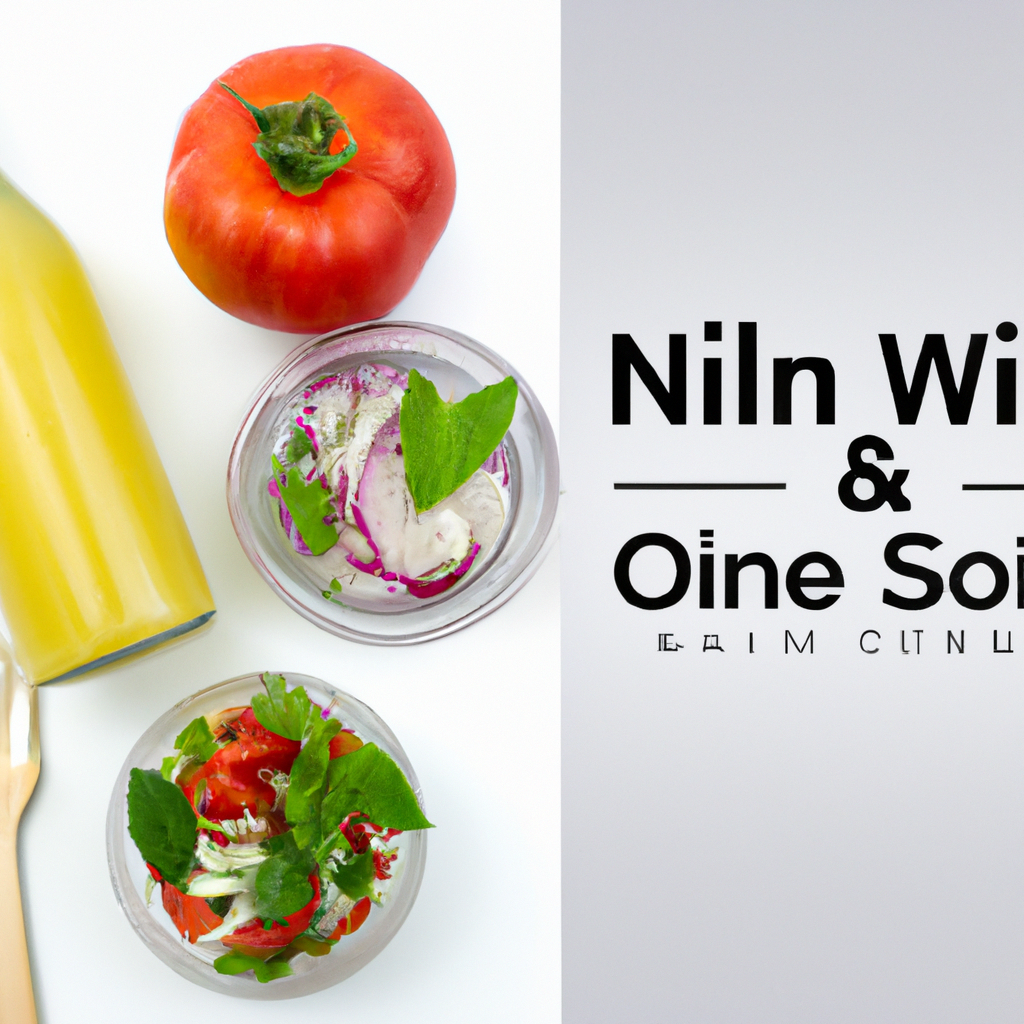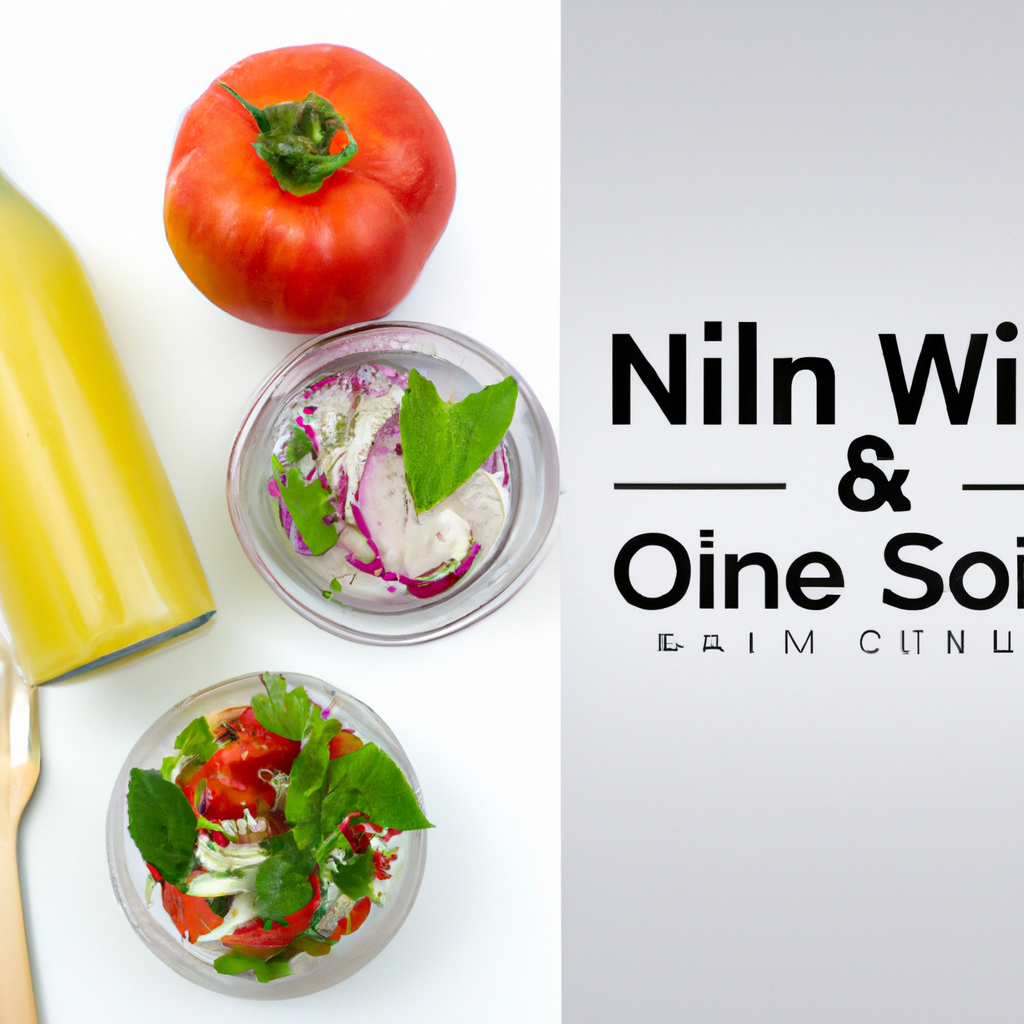Are you tired of store-bought salad dressings that just don’t quite hit the mark? Well, we’ve got the solution for you! If you’re looking to take your salad game to the next level, you need a gadget that can help you create delicious homemade dressings. Whether you prefer tangy vinaigrettes or creamy ranch, there’s a gadget out there that can make dressing up your greens a breeze. So say goodbye to those bland, generic dressings and let us introduce you to a world of flavor-packed possibilities. Get ready to impress your taste buds and elevate your salads to new heights with the perfect gadget for creating homemade salad dressings.

Benefits of Making Homemade Salad Dressings
Healthier Option
Making your own salad dressings at home allows you to have full control over the ingredients you use. Many store-bought dressings are filled with artificial preservatives, unhealthy fats, and high amounts of sugar and sodium. By preparing your dressings from scratch, you can choose healthier alternatives and avoid these unnecessary additives. You can opt for heart-healthy oils, such as olive oil, and use natural sweeteners like honey or maple syrup. Additionally, homemade dressings can be tailored to your specific dietary needs or preferences, whether you follow a low-fat, low-sodium, or vegan diet.
Cost-effective
Purchasing store-bought salad dressings can be quite expensive over time. However, making your own dressings at home is a budget-friendly alternative. The ingredients required for most dressings are simple and readily available, and you typically only need small amounts of each, so they can be used in multiple dressings. By buying the ingredients in bulk, you can save even more money. Moreover, homemade dressings tend to have a longer shelf life than their store-bought counterparts, allowing you to enjoy your creations for a longer period without worrying about them going bad.
Customizable Flavors
One of the greatest advantages of making homemade salad dressings is the ability to customize the flavors to your liking. Store-bought dressings often have a limited range of flavors, and it can be challenging to find a dressing that perfectly complements your salad. However, when you make your own dressings, you can experiment with different combinations of herbs, spices, fruits, and other ingredients to create unique and delicious flavors. Whether you prefer a tangy vinaigrette, a creamy ranch, or a sweet honey mustard, the possibilities are endless when you have the freedom to personalize your dressings.
Essential Tools for Making Homemade Salad Dressings
Whisk or Fork
A whisk or a fork is an essential tool for making homemade salad dressings. These simple tools allow you to mix the ingredients together thoroughly, ensuring that all the flavors blend harmoniously. Whisks are especially effective in emulsifying oil and vinegar-based dressings, creating a smooth and well-incorporated texture. If you don’t have a whisk, a fork can also do the job, although it may require a bit more effort.
Mason Jar or Dressing Shaker
A mason jar or a dressing shaker is another useful tool for making homemade dressings. These containers are designed with tight-fitting lids that allow you to shake the ingredients vigorously, ensuring proper mixing and emulsification. Using a mason jar or dressing shaker is not only convenient but also eliminates the risk of making a mess while whisking or stirring the dressings by hand.
Immersion Blender
An immersion blender, also known as a hand blender, can be a game-changer when it comes to making homemade salad dressings. This versatile gadget allows you to blend the ingredients directly in the container, resulting in a silky smooth texture. With its compact size and easy-to-use design, an immersion blender is a convenient tool for busy individuals who want to whip up dressings quickly and effortlessly.
Food Processor
If you prefer creamy or thick dressings, a food processor is a handy tool to have in your kitchen. With its powerful motor and sharp blades, a food processor can effectively blend and puree ingredients, creating dressings with a rich and velvety consistency. Whether you’re making a garlic-infused aioli or a tangy blue cheese dressing, a food processor can handle the task with ease.
Salad Dressing Mixer
For those who want to take their salad dressing game to the next level, a dedicated salad dressing mixer is worth considering. These gadgets are specifically designed to emulsify dressings by blending the ingredients thoroughly and creating a smooth and well-incorporated texture. Salad dressing mixers often come with various speed settings and timer functions, allowing you to achieve the perfect consistency and blend of flavors.
Recommended Gadget: Salad Dressing Emulsifier
What is a Salad Dressing Emulsifier?
A salad dressing emulsifier is a specialized gadget used to emulsify dressings, ensuring that the oil and vinegar or other ingredients are thoroughly mixed and evenly distributed. This device eliminates the need for manual whisking or blending, making the process quicker and easier.
Benefits of Using a Salad Dressing Emulsifier
Using a salad dressing emulsifier offers several benefits. First and foremost, it saves you time and effort. Emulsifying dressings manually can be time-consuming and tiring, especially if you need to make large quantities or multiple batches. With a salad dressing emulsifier, you can achieve the desired texture and consistency within seconds.
Furthermore, using an emulsifier results in a smoother and better emulsified dressing. The device ensures that the oil and vinegar or other ingredients are thoroughly mixed, creating a uniform blend that enhances the flavor and mouthfeel of your dressings. Additionally, an emulsifier can prevent separation or oil floating on top of the dressing, providing a visually appealing presentation.
Features to Look for in a Salad Dressing Emulsifier
When choosing a salad dressing emulsifier, there are a few key features to consider. Look for a model with a powerful motor and durable construction to ensure it can handle various ingredients and repeated use. Additionally, opt for an emulsifier with multiple speed settings, allowing you to adjust the blending intensity according to your preferences. Some emulsifiers also come with additional attachments or accessories, such as whisk attachments or storage containers, which can add versatility to your gadget.

Different Types of Salad Dressing Emulsifiers
Handheld Salad Dressing Emulsifier
A handheld salad dressing emulsifier is a compact and portable option for individuals who want a quick and efficient way to emulsify dressings. This type of emulsifier usually consists of a motor unit with blending blades at one end. It’s designed to be held and operated with one hand, making it convenient for on-the-go use or small kitchen spaces.
Battery-operated Salad Dressing Emulsifier
Battery-operated salad dressing emulsifiers offer the convenience of cordless operation. These emulsifiers feature a motor unit powered by batteries, allowing you to emulsify dressings without the need for an electrical outlet. Battery-operated emulsifiers are lightweight and easy to use, making them suitable for travel or outdoor picnics.
Electric Salad Dressing Emulsifier
Electric salad dressing emulsifiers are the most powerful and versatile option. These emulsifiers typically have a motor base with blending blades, similar to a traditional blender or food processor. They offer greater blending capacity and often come with additional features such as variable speed settings and preset programs for different types of dressings.
Factors to Consider When Choosing a Salad Dressing Emulsifier
Ease of Use
When selecting a salad dressing emulsifier, consider its ease of use. Look for user-friendly features such as ergonomic handles, intuitive controls, and easy assembly and disassembly. A user manual or recipe book provided with the emulsifier can also be beneficial for beginners who want guidance on using the device properly.
Power Source
Determine the power source that suits your needs. Handheld and battery-operated emulsifiers offer greater portability but may have less blending power compared to electric emulsifiers. Electric emulsifiers, while more powerful, require a stable power source and may be less convenient for outdoor use.
Speed Settings
Having multiple speed settings can greatly enhance your control over the blending process. Look for emulsifiers with different speed options, allowing you to adjust the speed according to the ingredients or desired texture of your dressings. Some emulsifiers also offer pulse or turbo modes for quick bursts of blending power.
Cleaning and Maintenance
Consider the ease of cleaning and maintenance before making a purchase. Look for emulsifiers with detachable and dishwasher-safe parts for effortless cleaning. Emulsifiers with self-cleaning functions or anti-spill designs can also save you time and effort in maintaining the gadget.
Popular Salad Dressing Emulsifiers on the Market
Brand A Salad Dressing Emulsifier
Brand A offers a handheld salad dressing emulsifier known for its compact size and powerful blending capabilities. It comes with a comfortable grip handle and multiple speed settings, allowing you to achieve your desired dressing consistency. The emulsifier also features a detachable blending wand, making cleaning a breeze.
Brand B Salad Dressing Emulsifier
Brand B offers a battery-operated salad dressing emulsifier that combines convenience and performance. It utilizes a rechargeable battery system, eliminating the need for disposable batteries. The emulsifier boasts a sleek and modern design, with a touch control panel for easy operation. It also includes a whisk attachment for added versatility.
Brand C Salad Dressing Emulsifier
Brand C stands out for its electric salad dressing emulsifier, which offers the ultimate blending power and functionality. This emulsifier comes with various preset programs for different types of dressings, making it easy to achieve the perfect consistency every time. It features a high-capacity blending jar and a robust motor, ideal for those who frequently prepare large quantities of dressings.
Tips for Making Homemade Salad Dressings
Start with a Base
When making homemade salad dressings, it’s essential to start with a base. A base usually consists of oil and acid, such as vinegar or citrus juice, which provide the foundation for your dressing. Choosing the right combination of oil and acid is crucial for achieving a balanced flavor profile. Olive oil is a popular choice for its rich taste, but you can also experiment with other oils like avocado, sesame, or walnut. Similarly, try different types of vinegar or lemon and lime juice to find your preferred level of tanginess.
Experiment with Flavors
Homemade dressings offer endless opportunities for flavor experimentation. Once you have your base, don’t be afraid to get creative and add various herbs, spices, fruits, or even grated cheese to your dressings. Dried herbs like basil, oregano, or thyme can infuse your dressings with aromatic flavors, while fresh herbs such as cilantro or parsley can provide a vibrant and refreshing taste. For a touch of sweetness, consider incorporating ingredients like honey, maple syrup, or fresh fruit purees. Remember to taste your dressings as you go and adjust the flavors accordingly.
Proper Storage
To ensure the longevity and freshness of your homemade dressings, proper storage is crucial. Most dressings can be stored in airtight containers in the refrigerator for up to two weeks. However, creamy dressings containing dairy or mayonnaise may have a shorter shelf life and should be consumed within a week. When storing, ensure the container is tightly sealed to prevent air exposure, which can lead to spoilage. Remember to give the dressing a good shake or stir before each use to redistribute the ingredients and maintain a consistent texture.
Recipes for Homemade Salad Dressings
Classic Vinaigrette Dressing
Ingredients:
- ¼ cup extra virgin olive oil
- 2 tablespoons balsamic vinegar
- 1 teaspoon Dijon mustard
- 1 garlic clove, minced
- Salt and pepper to taste
Instructions:
- In a small bowl, whisk together the olive oil, balsamic vinegar, Dijon mustard, minced garlic, salt, and pepper until well combined.
- Taste the dressing and adjust the seasonings if needed.
- Serve immediately or refrigerate for later use. Remember to shake well before serving.
Creamy Ranch Dressing
Ingredients:
- ½ cup mayonnaise
- ½ cup sour cream
- 2 tablespoons chopped fresh dill
- 2 tablespoons chopped fresh parsley
- 1 tablespoon chopped fresh chives
- 1 teaspoon onion powder
- 1 teaspoon garlic powder
- Juice of half a lemon
- Salt and pepper to taste
Instructions:
- In a mixing bowl, combine the mayonnaise, sour cream, chopped dill, parsley, chives, onion powder, garlic powder, lemon juice, salt, and pepper. Stir well until all the ingredients are thoroughly combined.
- Taste the dressing and adjust the seasonings if needed.
- Transfer the dressing to a jar or airtight container and refrigerate for at least 1 hour before serving to allow the flavors to meld together.
Honey Mustard Dressing
Ingredients:
- ¼ cup Dijon mustard
- 2 tablespoons honey
- 2 tablespoons apple cider vinegar
- ¼ cup extra virgin olive oil
- Salt and pepper to taste
Instructions:
- In a bowl, whisk together the Dijon mustard, honey, apple cider vinegar, salt, and pepper until well blended.
- Slowly drizzle in the olive oil while continuously whisking until the dressing is emulsified and smooth.
- Taste the dressing and adjust the seasonings if needed.
- Transfer the dressing to a bottle or jar and refrigerate until ready to use.
Conclusion
Making homemade salad dressings not only provides a healthier alternative to store-bought dressings but also allows you to personalize the flavors according to your preferences. With essential tools like whisks or forks, mason jars or dressing shakers, immersion blenders, food processors, and salad dressing mixers, the process becomes easier and more enjoyable. Consider adding a salad dressing emulsifier to your kitchen gadgets for quicker and better-emulsified dressings. When choosing an emulsifier, factors like ease of use, power source, speed settings, and cleaning/maintenance should be taken into account. Popular brands like A, B, and C offer reliable options. Remember to start with a base, experiment with flavors, and store your homemade dressings properly. Whether you’re making a classic vinaigrette, a creamy ranch, or a sweet honey mustard, making your own dressings adds a tasty and nutritious touch to your salads.

